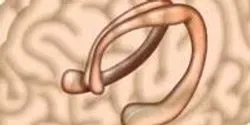Life Science

Scientists at The Scripps Research Institute (TSRI) have engineered a bacterium whose genetic material includes an added pair of DNA “letters,” or bases, not found in nature. The cells of this unique bacterium can replicate the unnatural DNA bases more or less normally, for as long as the molecular building blocks are supplied.

Bioengineers at the University of Rome Tor Vergata and the University of Montreal have used DNA to develop a tool that detects and reacts to chemical changes caused by cancer cells and that may one day be used to deliver drugs to tumor cells.

University of Adelaide researchers have discovered that stem cells taken from teeth can grow to resemble brain cells, suggesting they could one day be used in the brain as a therapy for stroke.

Meaningful “quick read” whitepaper “Life Science Trends 2014” also offers exclusive feature article on Big Data in the Life Sciences.

The Broad Institute announced April 15 that the United States Patent and Trademark Office has issued the first patent for an engineered CRISPR-Cas9 system that is enabling scientists to modify genes and better understand the biology of living cells and organisms. The institute applied for the patent in concert with the January 3, 2013 publication in Science (Cong, et al.) that described the use of the CRISPR enzyme, Cas9, for genome editing.

Scientists at the Salk Institute have created a new model of memory that explains how neurons retain select memories a few hours after an event.

Scientists have identified two unlikely partners in a type of immune cell called a macrophage that work together in response to cancer drugs to increase inflammation in a way that may alter tumor growth. Researchers from the National Institutes of Health published the study in the journal Cancer Research.

Scientists reported yesterday (Apr. 10) the first human recipients of laboratory-grown vaginal organs. A research team led by Anthony Atala, M.D., director of Wake Forest Baptist Medical Center’s Institute for Regenerative Medicine, describes in the Lancet long-term success in four teenage girls who received vaginal organs that were engineered with their own cells.











